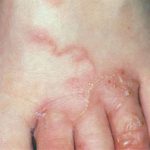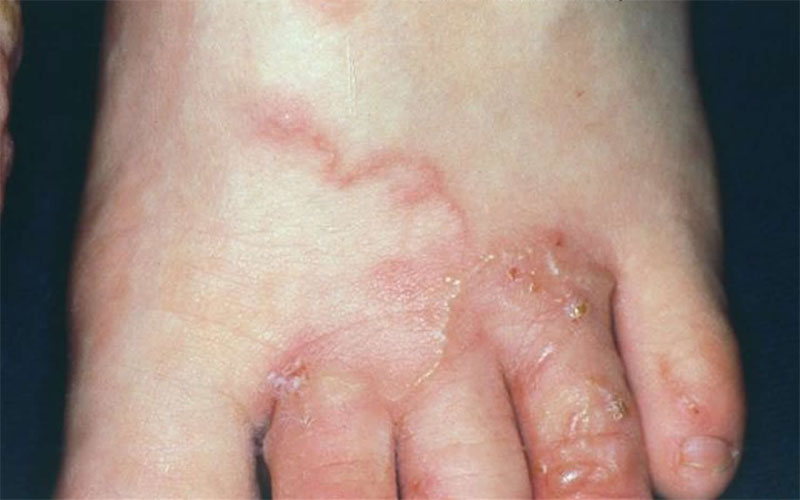 An itching skin complaint, caused by larvae of various parasites which creep under the skin.
An itching skin complaint, caused by larvae of various parasites which creep under the skin.
A skin disease caused either by larvae of nematode worms (e.g. Ancylostoma braziliense) normally parasitic in dogs and cats or by the maggots of certain flies. The larvae burrow within the skin tissues, their movements marked by long thin red lines that cause the patient intense irritation. The nematode infections are treated with diethylcarbamazine or thiabendazole; maggots can be surgically removed.
Creeping eruption is a skin condition caused by the invasion of the skin by the larvae of various species of nematode worms. It owes its name to the fact that as the larva moves through and along the skin it leaves behind it a long, creeping, thin red line.
A skin lesion marked by a tortuous elevated red line that progresses at one end while fading out at the other. It is caused by the migration into the skin of the larvae of certain nematodes, especially Ancylostoma braziliense and A. caninum, which are present in ground exposed to dog or cat feces.
The foot can be afflicted by a peculiar occurrence characterized by the presence of pruritic and erratic red lines. These distinctive patterns are formed as a result of larvae from the hookworm family and certain types of roundworms burrowing beneath the skin.
